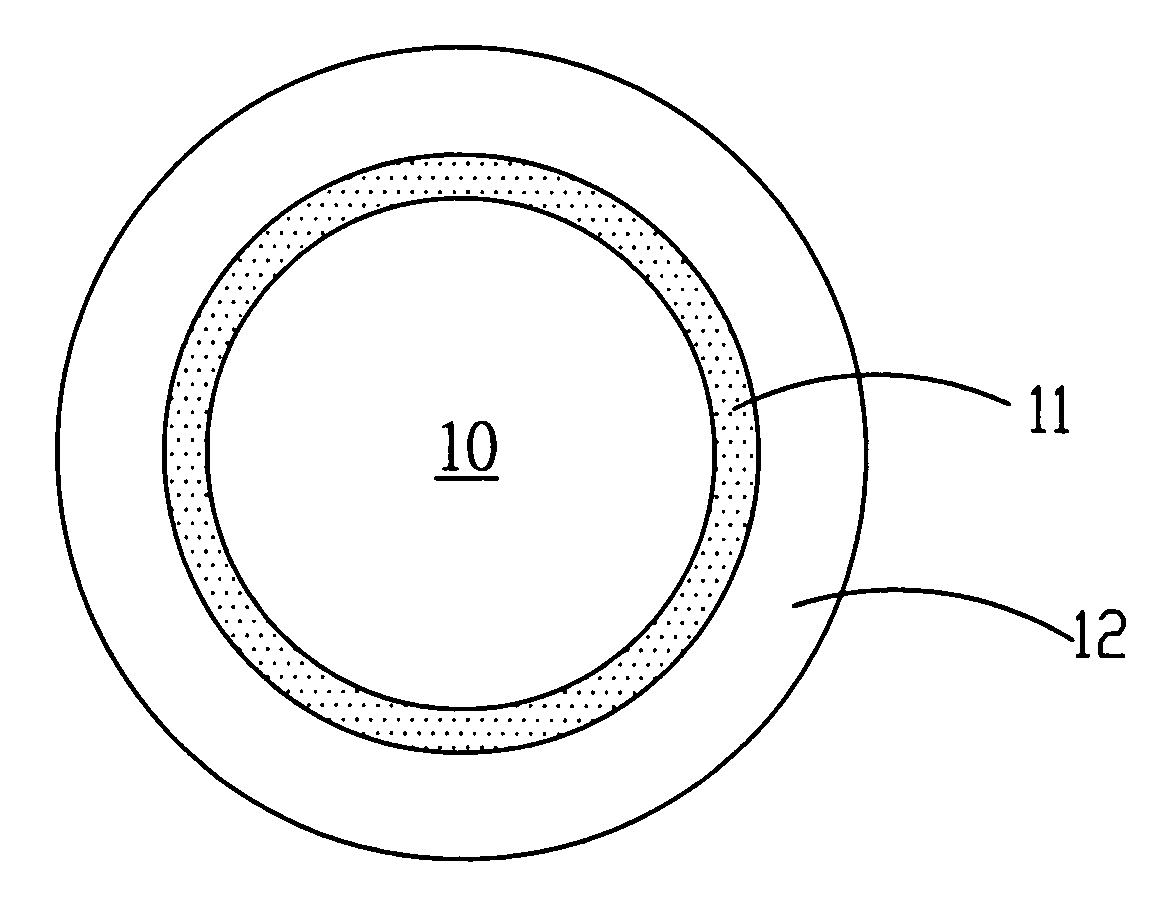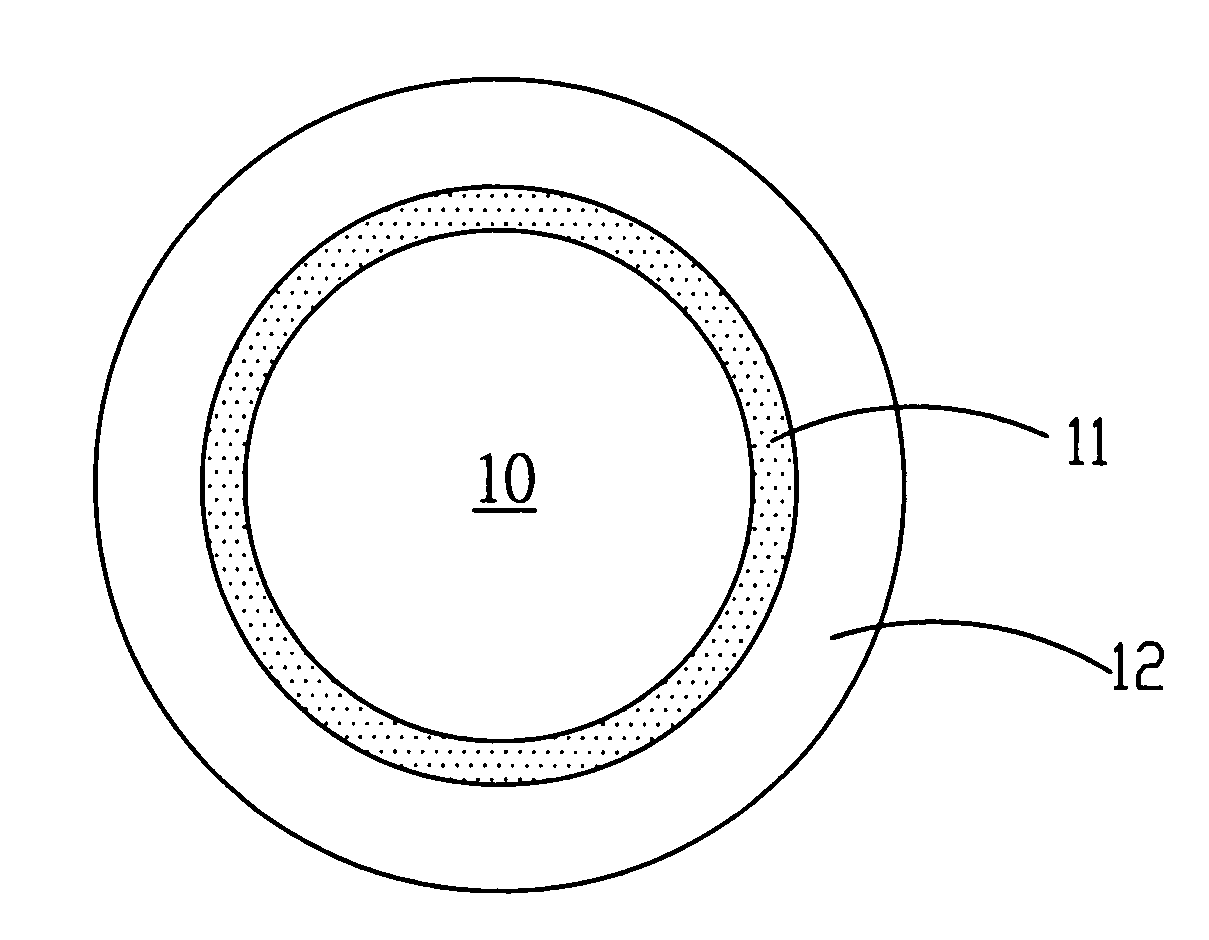Diffusion beads with core-shell structure
a technology of diffusion beads and core shells, applied in the direction of instruments, cellulosic plastic layered products, natural mineral layered products, etc., can solve the problems of poor heat and weather resistance and geometric stability of inorganic particles, and reduced light scattering and transparency, so as to improve heat resistance and heat resistance of original materials, maintain electrical neutrality, and excellent compatibility and exfoliation
- Summary
- Abstract
- Description
- Claims
- Application Information
AI Technical Summary
Benefits of technology
Problems solved by technology
Method used
Image
Examples
Embodiment Construction
[0018]In manufacturing technology, the present invention applies two techniques including the polymerization technique of polystyrene (PS) and the surface coating technique of core-shell. The experimental steps include polymerization of PS, swelling and wetting, dispersion, and interface modification of nanoclay, coating of PS (core) and acrylic modified clay (shell), and coating of outermost PMMA. Besides, an embodiment of a diffusion sheet will be described.
1. Polymerization of PS Core:
[0019]Take 57 grams of alcohol solvent and pour it into a three-neck round-bottom flask. Then, 0.5 gram of dispersion agent polyvinylpyrrolidone (PVP) is added. After PVP is dissolved completely, raise the temperature to 60° C. Pour 22 grams of styrene monomer with 0.1 gram of initiator 2,2-azobisisobutrionitrile dissolved therein. Apply argon for 20 minutes for eliminating oxygen in order to prevent reduction in reaction rate. Under the protection of stir and argon, stir the solution at 200 rpm. Af...
PUM
| Property | Measurement | Unit |
|---|---|---|
| diameters | aaaaa | aaaaa |
| diameters | aaaaa | aaaaa |
| diameters | aaaaa | aaaaa |
Abstract
Description
Claims
Application Information
 Login to View More
Login to View More - R&D
- Intellectual Property
- Life Sciences
- Materials
- Tech Scout
- Unparalleled Data Quality
- Higher Quality Content
- 60% Fewer Hallucinations
Browse by: Latest US Patents, China's latest patents, Technical Efficacy Thesaurus, Application Domain, Technology Topic, Popular Technical Reports.
© 2025 PatSnap. All rights reserved.Legal|Privacy policy|Modern Slavery Act Transparency Statement|Sitemap|About US| Contact US: help@patsnap.com


